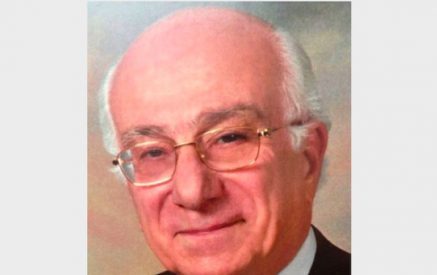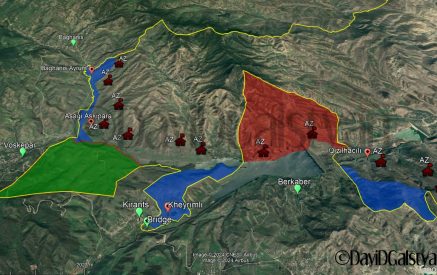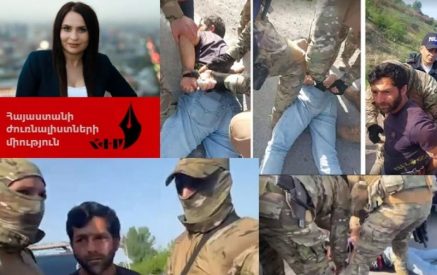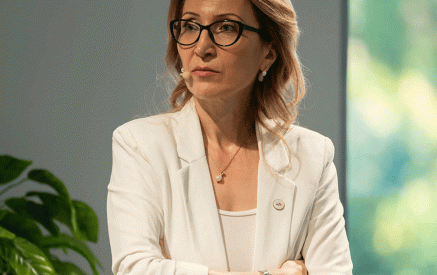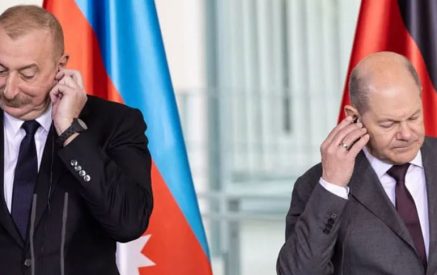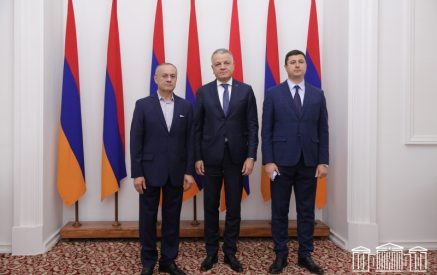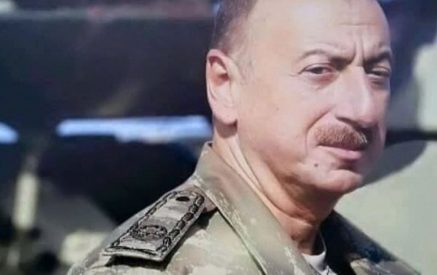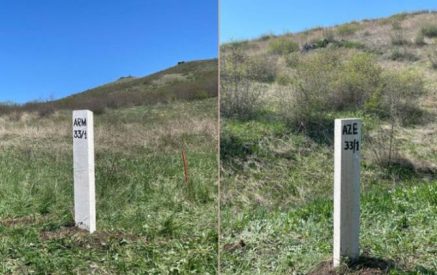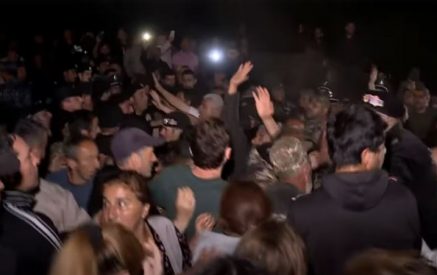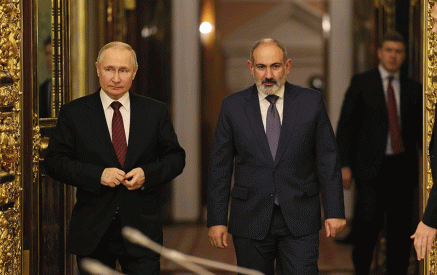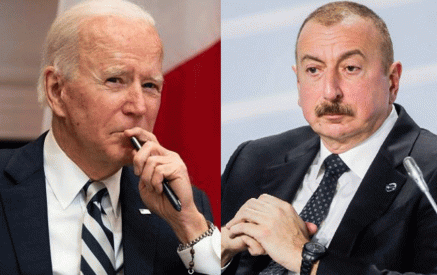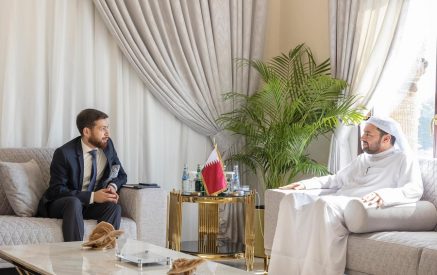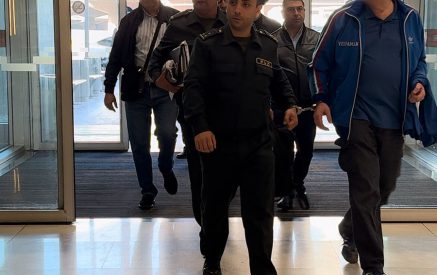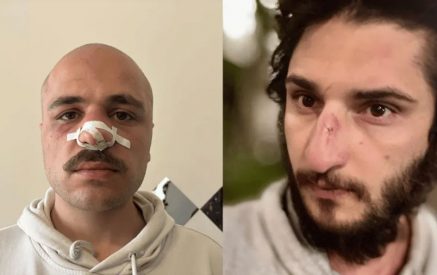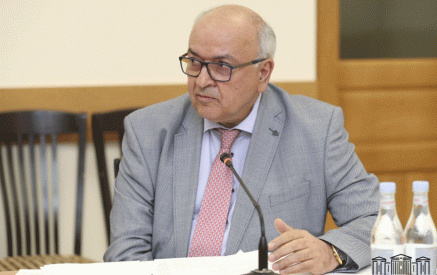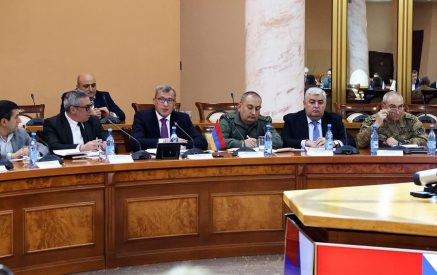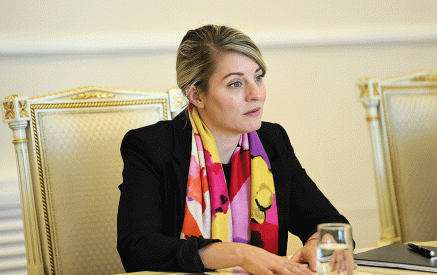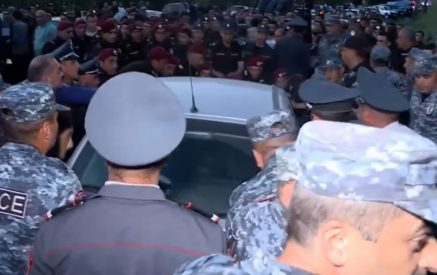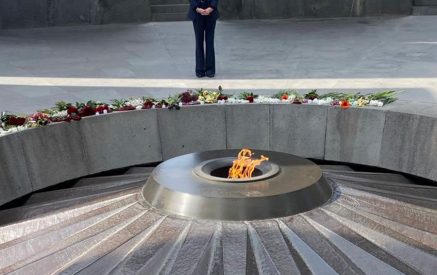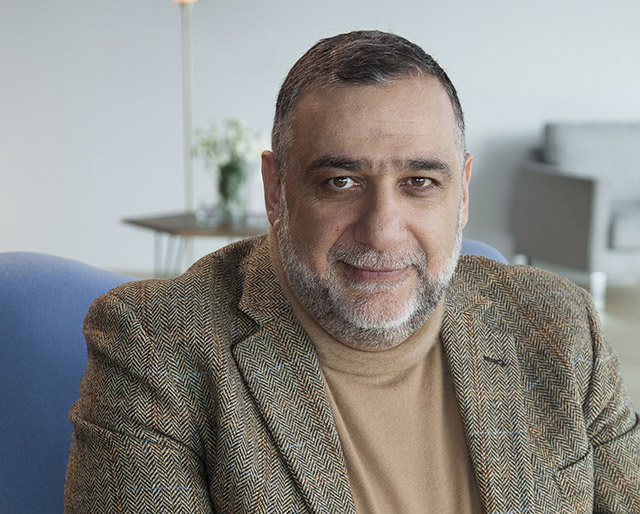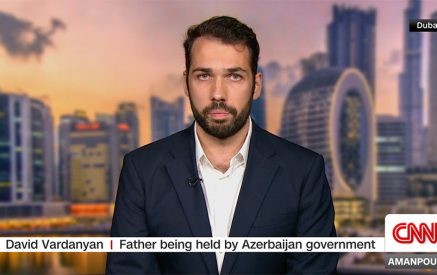Ruben Vardanyan, evolutionary visionary, Co-founder of the Aurora Humanitarian Initiative, UWC Dilijan, FAST, International School of Leadership and Professional Development “Matena” and other projects.
Part 9
Read the beginning here
It goes without saying that we all want to see Armenia thrive, but for the majority, a prosperous Armenia is an abstract notion. Much has been said about the country’s prosperity, but in fact, few are able to go beyond personal interests and concern for the well-being of their own family, close friends, and relatives. Since 2001, our partners and I have been trying to initiate a broad public discussion about the future of the country and the people, and we constantly face the reluctance of the majority to get involved in this intellectual pursuit. To make matters worse, a notable drawback of our social life is that we are not always ready to patiently discuss difficult and unpleasant topics, and we still have to learn the art of dialogue. However, without such discussions, we will never achieve a public consensus, which should form the basis for making specific decisions about the future of Armenia and the Armenian people.
Read also
Much has been said about the prosperity of the country, but in fact, few are able to go beyond personal interests and concern for the well-being of family, close friends, and relatives.
Each of us holds their views, system of values, priorities, and criteria for success, and, therefore, their own vision, whether broad or not, of the way things should be and their own planning horizon. For some, the prosperity of Armenia is the stability of economic growth and the security of state borders, while for others, its role in world politics is key. Someone puts above all the well-being of our citizens, whereas others prioritize the country’s capability to be the center of the Armenian world. Someone thinks in the medium term; someone is concerned about the future of their children; others think about several future generations of Armenians. The final chapter of the discussion paper At the Crossroads focuses on our vision of the future of the Armenian nation—mine and that of my partners and associates. Below are my ideas for what steps we should take now.
- Agree on the socioeconomic model of Armenia’s development. Choosing the path is not easy. It would be a simplification to divide development models into ‘good’ and ‘bad’: a more accurate argument dwells on the optimality of a particular model for a particular country and nation, the ability to provide the best conditions in terms of prosperity, security, identity preservation, and its development in a new reality. The choice of the optimal model should be made consciously as a result of the consensus of both a pragmatic and responsible, selfless elite, supported by the most active and fairly wide public circles. The challenges that we will have to cope with are ensuring the transparency of discussions at all stages and the decision-making process, as well as the subsequent implementation of these decisions.
- Determine the form of government and establish a state government system.

We need to get back to discussing the distribution of the roles of the president and the prime minister, their powers and responsibilities, and those of the heads of local authorities.
Photo credit: Photolure News Agency ©
We are talking about building a system of checks and balances, as mentioned above, which would prevent the concentration of power in the hands of a single person, be it the president or the prime minister, ensure the separation of the main branches of government and accountability to their citizens, boost transparency and inclusiveness of the processes of making decisions that are important for the country and the people in order to reduce the likelihood of influence on these processes by groups representing certain interests. We can see a successful historical example of such a system in the political system of the Venetian Republic, which existed for over a millennium.
In my opinion, we need to get back to discussing the distribution of the roles of the president and the prime minister, their powers, and responsibilities. The same is true for the heads of local authorities as the communities expand. We develop training and incentive programs to help local leaders more effectively attract private investment in regional development and manage projects. Besides, changes in legislation are needed that will allow communities to channel the income received from investments for their own needs and further development.
Many still harbor paternalistic illusions, pinning hopes for a better future on the familiar model of a strong, even authoritarian, industrial state.
Today, the future of nation-states as the basis of the world order is increasingly being questioned. In my opinion, it is rather a matter of rethinking their role and principles of functioning, as well as the search for new mechanisms of interaction with society. Unfortunately, most of us still harbor paternalistic illusions, pinning hopes for a better future on the familiar model of a strong, even authoritarian industrial state, which exercises fatherly care for its citizens. These views of the state are becoming increasingly anachronistic. Now the key thing is not just boosting the efficiency of state institutions—we need to understand what their role and functions should be in the 21st century to create a harmonious and safe environment suitable for tapping into people’s creative potential.
- Conduct a full audit, inventory of our assets, and certification of personnel both in the state and public sector. For a movement to be reasonable, we need to clearly imagine the starting and ending point of the route, that is, to understand where we are, where we want to go, and what material and non-material resources the country and the global network nation have. A whole different story is analyzing the effectiveness of the state apparatus of the Republic of Armenia: it is necessary to assess the number of employees in state institutions, their goals and objectives; to carry out their certification; to identify offices that can be canceled as redundant, or, on the contrary, that should be introduced; to develop and implement systems of motivation and assessment of activities that improve performance and accountability.
- Attract the investments necessary to reboot the entire system of Armenia. The republic’s government plans to ensure a minimum GDP growth of 7% by 2026. Surely, GDP cannot be the sole indicator of a nation’s well-being, and yet, I believe that Armenia should go much further in its aspirations and try not just to double but triple this indicator. In addition, rebuilding the post-war economy and civilian infrastructure requires significant investment. As I have already noted, I estimate the amount of investment needed at $15–20 billion. It appears to be possible to create a system of funds designed for these purposes, which would become an example of public-private partnership.

Cooperation of different actors can only be productive if there is a certain institutional framework. UWC Dilijan is a prime example of public-private partnership. Photo credit: UWC Dilijan ©
The anchor in this system will be a $3–5 billion private equity fund in development with a planning horizon of up to ten years. At the same time, it is important not only to raise the necessary funds but also exercise good judgment in deploying them. The Development Fund of Armenia will play an important role in changing the entire structure of investment in projects in our country. For it to succeed, four components should be in place: 1) funds of the Armenian Diaspora; 2) engagement of the government of Armenia; 3) investments of international development institutions and owners of strategic assets in Armenia (primarily from Russia); 4) attracting international capital.
GDP cannot be the sole indicator of a nation’s well-being, and yet, Armenia should try not just to double but triple this indicator.
Second, we need to set up a fund in the amount of $1 billion intended to create various enterprises and attracting investments in the former Western Armenia, as mentioned earlier.
Third, it is important to establish a fund for the support and development of the Armenian language and culture. Along with honing our own linguistic culture, we need to expand the study of foreign languages, both European and Eastern: primarily Russian, English, and French, as well as Farsi, Turkish, Arabic, and possibly Chinese. We must be a polyglot nation to have an edge over our neighbors.
The platform is an institutional foundation for interaction, ensuring the concentration of resources, coordination, and acceleration of processes.
Cooperation of different actors—the state, private investors, development institutions, NGOs, and others—can only be productive if there is a certain institutional framework that meets the highest international standards, which sometimes have to be developed by ourselves. Such a framework is created by a set of platforms. The platform is a real or virtual foundation for interaction, providing concentration of resources, coordination, and acceleration of processes. A set of platforms is an underwater part of the iceberg, without which you cannot move from an idea to its implementation. They help you organize and unite the participants, make the necessary calculations, carry out day-to-day management, etc. An important function of platforms is to minimize costs. On the basis of the same platform, it is possible to implement both large-scale and small-format projects that will be able to use existing services.

Our planning horizon includes at least our children and grandchildren, who are just starting their life’s journey. Children and Youth Choir of the Tatev community.
Photo credit: IDeA ©
All projects that my partners and I are implementing in Armenia create a single space, pursue a common goal, and rely on several platforms: technological (Foundation for Armenian Science and Technology, FAST), humanitarian (Aurora Humanitarian Initiative), educational (Scholae Mundi Foundation), healthcare (Tree of Life), environmental (Climate Uturn), cultural (Ani), financial (Ameria Group), tourism and urbanism (Tourism and Urbanism Foundation, TUF), and a platform for social entrepreneurship (IDeA). Our partners, the Arar Foundation, have created a platform for the implementation of projects in the field of security. For completeness of coverage, agricultural, mining and metallurgical, and export-import platforms are also needed.
- Hire top-level professional executives and experts. Over the 20 years of implementing various projects in Armenia, I have faced four main challenges: the lack of qualified executives, the lack of large-scale multi-purpose projects that would cause a chain reaction of positive changes, the lack of money for the implementation of such projects, and the lack of a favorable and stimulating environment for their emergence and implementation. All these challenges are interconnected, but the main one, in my opinion, is the first one, and if we can find an answer to it, this will serve as the key to solving all other problems. Institutional and private investors, as well as development institutions, will be more willing to allocate money for projects, knowing that their implementation will be carried out by world-class professionals who, on the one hand, have experience in managing such specific institutions, and on the other, are well-acquainted with Armenia and its features. The hallmark of large-scale multi-purpose projects is that they tend to be mushrooming and fostering the emergence of new initiatives, thereby creating the environment we need.
Our interaction is increasingly going online, and this enables us to significantly hone our competencies, engaging the required specialists anywhere in the world. In order to capitalize on this advantage, we need to remove a number of internal restrictions in the country’s governance system and create a database of experts who are ready to devote their time—in part or in full—to work on development projects in Armenia that are being implemented in the public and private sectors. In this regard, it will also be necessary to create a ‘bank of time’ and conditions for remote work or, on the contrary, for professionals of different ages to move to Armenia.
To be continued

